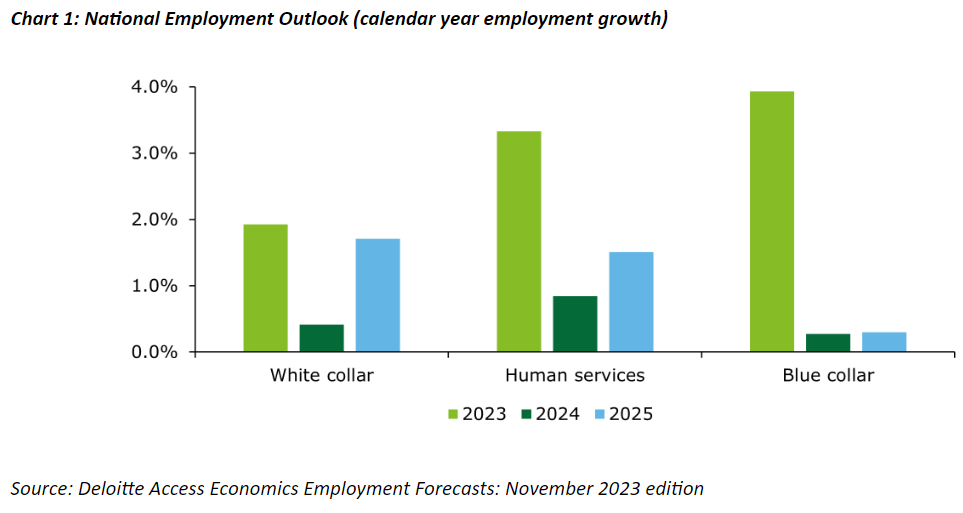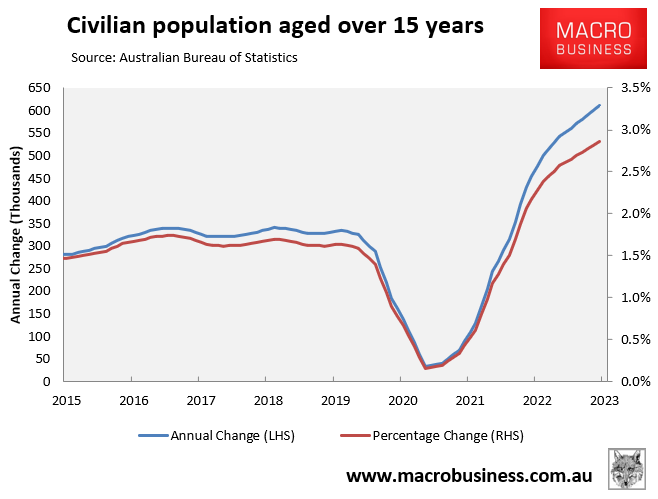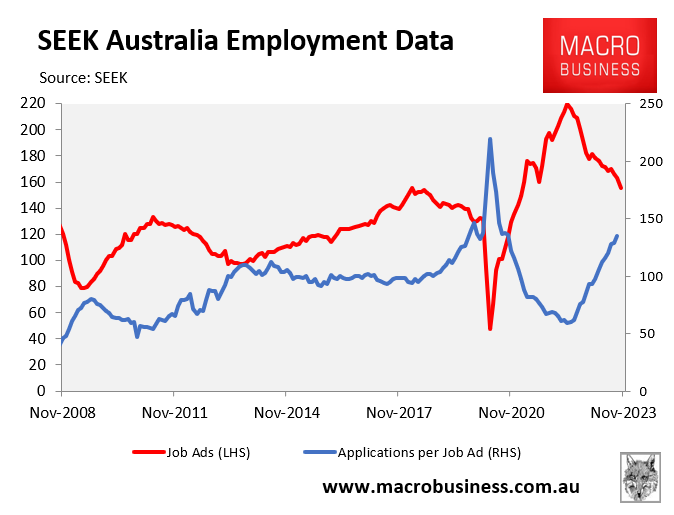Deloitte Access Economics has released its latest Employment Forecasts, which “notes that the labour market is likely to cool off significantly as we head into the summer months”.
“Despite a remarkably low unemployment rate and high participation rate, most labour market indicators suggest a tipping point”.

Deloitte notes that the “first signs of trouble have been through job vacancies, which are now 15.2% lower than a year ago – indicative of lower demand for labour. Looking ahead to next year, Deloitte Access Economics expects tougher economic conditions to weigh down on firm hiring decisions”.
It forecasts “national employment growth of just 0.5% (75,000 workers) in calendar year 2024, before gradually increasing to 1.3% (177,000 workers) in calendar year 2025”, which will increase the nation’s unemployment rate to 4.5% by June 2024.
The “blue-collar workforce will likely bear the brunt of the labour market slowdown”, warns Deloitte.
“Without broad-based growth in other large industries to offset this decrease, the blue-collar workforce is expected to grow by just 0.3%, or around 10,300 workers, in calendar year 2024”.
Australia’s labour force is currently growing at a record pace of around 2.8% (600,000 people), which means that Australia needs to create around 38,000 jobs per month just to keep the unemployment rate stable (assuming a steady labour force participation rate).

The signs for the labour market are poor with labour demand as measured by job ads falling sharply at the same time as labour supply is swelling:

In turn, the number of applicants per job ads has soared well above pre-pandemic levels, according to SEEK, suggesting rising unemployment ahead.
Independent economist Tarric Brooker recently estimated that if the labour supply continues to grow at its current record pace and jobs growth merely returns to its five-year pre-pandemic average of 22,000 per month, then Australia’s official unemployment rate would rise to 5.2% by the end of 2024:

Basically, Australian workers are caught between the RBA’s aggressive interest rate hikes and the Albanese government’s record immigration program.
As a result, they face rising unemployment and falling real wages.

